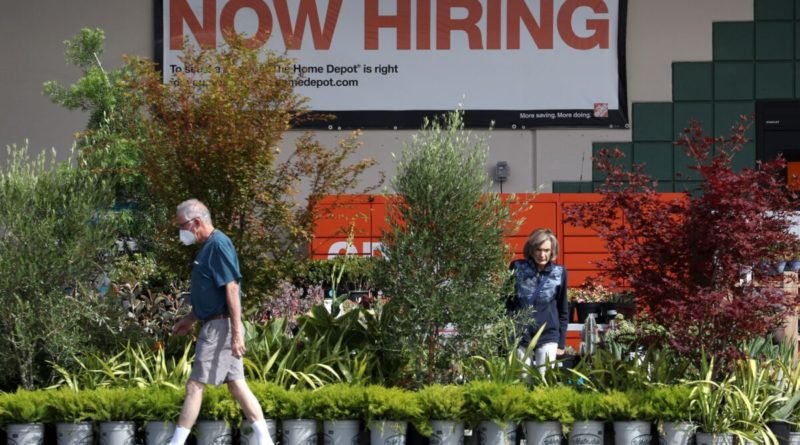Retirees Returning to the Workforce—Can Older Americans Resolve the Labor Shortage?
The U.S. labor shortage will not be easing up any time soon, warned Federal Reserve Chair Jerome Powell in November. One of the reasons for the immense gap in the national job market has been the surge in retirements since the beginning of the coronavirus pandemic.
A Nov. 2022 report by the central bank revealed that the retired share of the U.S. population, which was more than 1 percent above the pre-pandemic level, has accounted for almost all of the shortfall in the labor force participation rate.
The Fed paper also concluded that “more than half of the increase in the retired share are ‘excess retirements’ that would likely not have occurred in the absence of the pandemic.”
Many things have changed since the early days of the coronavirus pandemic, mainly in the marketplace. Today, the cost of living remains exorbitant, consumers’ purchasing power has eroded, savings accounts have been decimated by inflation, and household debt levels have soared.
Despite the cost-of-living adjustment (COLA) in Social Security benefits, 54 percent of older Americans think the 8.7 percent boost will not keep up with inflation, according to a new survey by the Senior Citizens League.
“Today’s retirees have never experienced this level of inflation, which hasn’t been seen in more than 40 years,” the report stated.
At the same time, a Gallup poll discovered that 63 percent of U.S. adults 65 and older are satisfied with their Social Security and Medicare benefits.
Whatever the case may be for millions of seniors, could the latest economic developments force retirees back into the workforce? Recent surveys suggest that retirees are at least considering “unretiring.”
A new study by Paychex revealed that 1 in 6 retired Americans is thinking about finding employment opportunities. A few of the top reasons for heading back to the workplace and submitting CVs included “needing more money” (53 percent) and “inflation” (45 percent).

“It’s been a tough few years economically in the U.S. The pandemic and inflation have upended people’s lives physically, mentally, and financially, making retirement seem even more like an improbable dream than before for many young people. As a result, some are adjusting their retirement goals,” the report stated.
And it might already be happening.
Older Workers Unretiring
For Americans aged 65 to 74, the labor force participation rate was 25.8 percent in 2021, according to the Bureau of Labor Statistics (BLS). By 2031, this figure is expected to rise to 30.7 percent. For those 75 and older, the labor force participation rate edged up from 7.5 percent in 2011 to 8.6 percent in 2021. But it is estimated that this figure will climb to more than 11 percent.
A recent analysis by John Robertson, a senior policy adviser at the Atlanta Fed Bank, found that the U.S. labor market is also getting older. The gap between the working-age population and seniors has widened in the last three years. The number of prime-age workers—individuals aged 25 to 54—rose by 40,000 in 2022. By comparison, the number of Americans 65 and older surged by two million in this span.
BLS data highlighted that the number of employed workers over 55 rose nearly 8 percent year-over-year in January.
Many older Americans may choose to unretire for financial reasons, whether to supplement Social Security income or keep up with inflation. But Doug Dahmer, the CEO and founder of Retirement Navigator, says many of his clients “want to keep their minds active” and “their social livings invigorating.”
“What I have noticed is that roughly 30 percent of my clientele decide to make the choices to return to some form of employment after leaving their previous careers,” he told The Epoch Times.
“In almost all instances where I have seen my clients return to work after retirement, their choices have not been motivated by financial need, but simply a desire for structure and to stay busy.”
‘The Great Unretirement’
Seniors working beyond the retirement age has become the norm in the last 20 years, with some economists describing it as “The Great Unretirement.” Statistics from the Department of Labor reveal that the number of people 65 and older working or looking for work has skyrocketed by 144 percent.
Dahmer noted that a common type of employment for seniors is “work optional.” This is when older individuals who have chosen to return to the labor force will “set their own terms of engagement.”
“So, if or when the work they are engaged in becomes an obligation, they can simply choose to end the engagement. Once this happens, in many cases they then pursue another opportunity,” he explained.
Even with signs that the U.S. economy could be slowing down, companies are still struggling to fill open positions. There were approximately 11 million job openings in December, nearly an all-time high.
Stephanie Ferguson, the director of global employment policy and special initiatives at the U.S. Chamber of Commerce, purports that employers must continue attracting and retaining talent, with many businesses having to adapt to workers’ needs, be it adopting remote work models or offering child care.
“No one solution to industry labor shortages or employee retention exists,” she wrote. “Nor are any solutions appropriate for all industries or employers.”

Seniors heading back to the office could be the solution for businesses trying to hire employees, says Kara Hertzog, the president of Innovative Employee Solutions (IES)
“A lot of retirees struggle with filling their time after retiring and truly miss the social aspect that working brings. This is a good thing for companies looking to hire skilled workers,” Hertzog stated.
“There is a multitude of reasons a retiree might choose to return to work, running the gamut from financial necessity to simple boredom. Regardless of their specific personal motivations, this ‘unretired’ demographic is a godsend to businesses in need of talented and experienced employees—a commodity currently in short supply.”
Financial experts will recommend that workers in their 50s and 60s work longer to bolster their savings, delay claiming their Social Security benefits to max out their payments, and have something to do. This may have been a choice before the public health crisis, but working might be a necessity for others in an inflationary economy.




